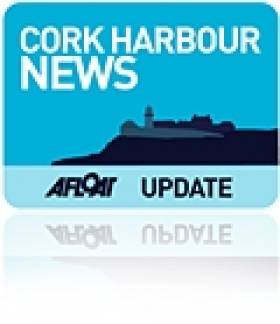Displaying items by tag: Green Energy Hub
The winners of the 2011 Port of Cork Schools Initiative have been announced.
St John the Baptist National School in Midleton took the prize for best project in this year's contest, with the theme of ‘Making Cork Harbour a Green Energy Hub for our Future’.
Fifth classes from more than 60 primary schools in the Cork area got creative for the project, some even producing whole scale models of Cork Harbour.
Chairman of the Port of Cork, Dermot O’Mahoney, said: "We are delighted with the efforts put in by the participating schools. This is a great way of educating school children on the different forms of energy within Cork harbour while also highlighting the role of the Port of Cork."
Every participating class will be invited for a visit to Customs House in Cork city with a boat trip around the harbour before the end of the summer term. As top prize winners, pupils from St John the Baptist will get to visit one of the many luxury cruise liners that call at the port.
All projects are currently on display in the reception of Customs House.
Port of Cork Calling all 5th Class Teachers!
School-children will be able to earn about the harbour and how it could be used to harness energy such as wind, wave, gas, electricity and other forms of energy. In addition it will provide an opportunity for the participants to be creative and futuristic about Cork harbour. Children can also look at the importance of green energy in their home and school.
The projects are to be presented in artwork format using paintings, models or photographs. Submitted projects will go on public display in the Cork Customs House for six weeks before the winner is announced in April 2011.
All 5th classes who take part in the Port of Cork Schools Initiative are treated to a boat trip around Cork harbour and each class will receive a certificate of participation. Prizes will be given for the best artwork piece and best photograph.
The overall winner of the Schools Initiative project will receive a tour onboard one of the many cruise liners that are to visit Cork Harbour next summer.
Closing date for entries is 18th March 2011. For further information on this year's schools project and how to get involved you can contact Captain Pat Murphy Tel: 021 4625312 or by Email [email protected] and by logging on to www.portofcork.ie
In addition you can view below a video depicting liners of yesteryear and the cruiseships that visit Cork Harbour, the world's second largest natural harbour.























